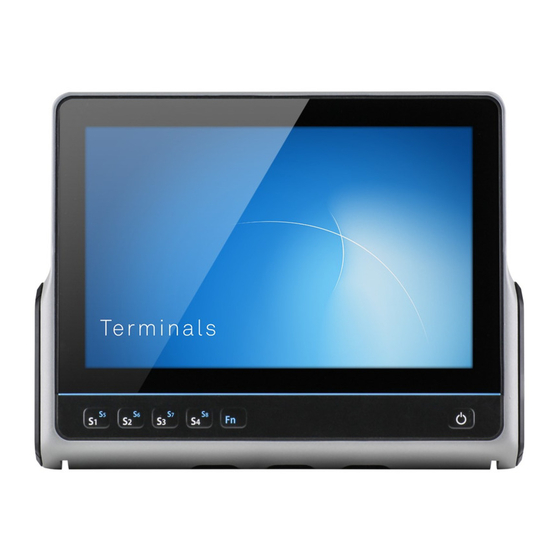
Summarization of Contents
General information about documentation
General information
Manual purpose, user obligations, and language of the original version.
Explanation of safety instructions
Details how safety instructions are structured and the meaning of signal words.
Structure of safety instructions
Defines hazard classification, signal words, and information on avoiding hazards.
Explanation of signal words
Explains DANGER, WARNING, CAUTION, ATTENTION, and Recommendation signal words.
Relevant device documentation
Lists other relevant documents and the website for downloads.
Symbols
Explains symbols for batteries, WEEE, and protective earth connection.
Data, figures and modifications
Disclaimer on data accuracy, completeness, and subject to change.
Trademarks
Lists registered trademarks and acknowledges third-party trademarks.
Copyright
Copyright notice for the manual and details on usage rights.
General device information
Manufacturer and contact details
Provides manufacturer's name, address, phone, email, and website.
Intended use
Describes the primary applications in logistics and production environments.
Improper use
Details operations considered improper use and consequences of misuse.
Environmental conditions
Specifies conditions for operation, including heat, condensation, vibration, and shock resistance.
Conformity
Declares compliance with European directives and lists relevant standards.
Warranty / repairs
States that repairs must be performed by the manufacturer or authorized personnel.
Limitation of liability
Excludes liability for damages due to non-compliance, misuse, or unauthorized modifications.
Treatment and disposal of lithium batteries
Provides warnings and instructions for handling, storage, and disposal of lithium batteries.
Mechanical installation
Requirements
Specifies requirements for the installation location, including heat considerations.
Mounting the device
Details methods and specifications for mounting the device.
VESA 75 interface
Details VESA 75 mounting specifications, including screw holes, thread, torque, and depth.
Other options
Describes alternative mounting brackets and their installation sequence.
Electrical connections
Requirements
Highlights precautions for electrostatic discharge and connecting/disconnecting power.
Opening the service slot
Provides step-by-step instructions and illustrations for opening the service slot.
Compliance with the IP protection class
Explains how to maintain IP protection class by using plugs, seals, and closing the slot.
Interface overview
Provides a visual overview and list of all device interfaces with references to relevant sections.
Power supply
Details the pin assignments and signals for the power supply connector.
Ignition function
Explains how the ignition function controls device start-up and shutdown.
Earthing concept
Describes the earthing concept, including FE and PE connections for EMC.
Autostart
Explains the autostart function and how it is activated via a switch.
Serial interface COM1 (RS232)
Provides configuration details for COM1 serial interface, including IRQ and address.
Optional: serial interface COM2 (RS232)
Details configuration for the optional COM2 serial interface, including IRQ and address.
Closing the service slot
Provides step-by-step instructions and torque specifications for closing the service slot.
Commissioning
Requirements
Highlights the requirement to acclimatize the device to ambient temperature to prevent condensation damage.
User interfaces
Overview of user interaction points on the device, including front and rear interfaces.
Front
Details the front interface components: touchscreen, USB, keys, sensor, and ON/OFF button.
Functions of the front keys ex factory
Explains the default functions of the configurable front keys.
Rear side
Identifies the location of the speakers on the rear side of the device.
Switching on and configuring device
Instructions on starting the device and using the Configuration Center for settings.
Features
MicroSD card
Instructions for inserting a MicroSD card for memory expansion and backups, with data loss warning.
RFID reader (optional)
Information on supported transponders for the optional RFID reader.
WLAN (optional)
Details using WLAN, connecting external antennas, and configuration options.
Bluetooth (optional)
Notes that devices with WLAN also have Bluetooth functionality.
Mobile communications (optional)
Instructions for inserting a nano-SIM card for mobile communications, with data loss warning.
GPS (optional)
Explains GPS functionality and connecting a GPS antenna.
CAN FD (optional)
Provides pin assignment details for the optional CAN FD interface.
Software / driver installation
Initial installation of the operating system
Describes methods for reinstalling the operating system via USB interface or PXE network boot.
Write protection
Explains the importance of managing write protection in the Configuration Center for software installation.
Service & support
ADS-TEC support
Provides contact details for the ADS-TEC support team, including phone, fax, and email.
Company address
Lists the official company address for ads-tec Industrial IT GmbH.






Need help?
Do you have a question about the VMT9112 and is the answer not in the manual?
Questions and answers